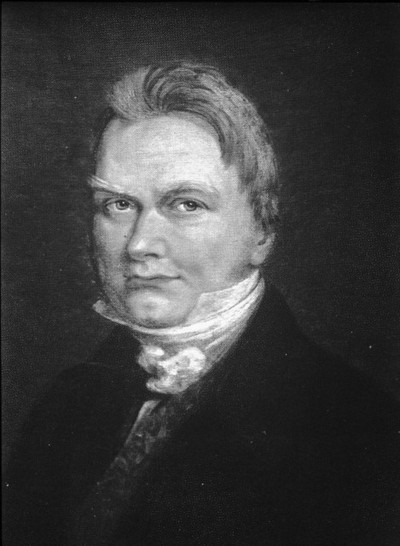Jöns Jacob Berzelius (Jöns Jacob Berzelius)

Born at Väversunda in Östergötland in Sweden, Berzelius lost both his parents at an early age. Relatives in Linköping took care of him, and there he attended the school today known as Katedralskolan. He then enrolled at Uppsala University where he learned the profession of medical doctor from 1796 to 1801; Anders Gustaf Ekeberg, the discoverer of tantalum, taught him chemistry. He worked as an apprentice in a pharmacy and with a physician in the Medevi mineral springs. During this time he conducted analysis of the spring water. For his medical studies he examined the influence of galvanic current on several diseases and graduated as M.D. in 1802. He worked as physician near Stockholm until the mine-owner Wilhelm Hisinger discovered his analytical abilities and provided him with a laboratory. Between 1808 and 1836, Berzelius worked together with Anna Sundström, who acted as his assistant. In 1807 Berzelius was appointed professor in chemistry and pharmacy at the Karolinska Institute.
In 1808, he was elected a member of the Royal Swedish Academy of Sciences. At this time, the Academy had been stagnating for several years, since the era of romanticism in Sweden had led to less interest in the sciences. In 1818, Berzelius was elected the Academy’s secretary, and held the post until 1848. During Berzelius’ tenure, he is credited with revitalising the Academy and bringing it into a second golden era (the first being the astronomer Pehr Wilhelm Wargentin’s period as secretary from 1749 to 1783). He was elected a Foreign Honorary Member of the American Academy of Arts and Sciences in 1822. In 1837, he was elected a member of the Swedish Academy, on chair number 5.
Not long after arriving to Stockholm he wrote a chemistry textbook for his medical students, from which point a long and fruitful career in chemistry began. In 1818 he compiled a table of relative atomic weights, where oxygen was set to 100, and which included all of the elements known at the time. This work provided evidence in favour of the atomic theory proposed by John Dalton: that inorganic chemical compounds are composed of atoms combined in whole number amounts. In discovering that atomic weights are not integer multiples of the weight of hydrogen, Berzelius also disproved Prout’s hypothesis that elements are built up from atoms of hydrogen.
In order to aid his experiments, he developed a system of chemical notation in which the elements were given simple written labels—such as O for oxygen, or Fe for iron—with proportions noted by numbers. This is the same system used today, the only difference being that instead of the subscript number used today (e.g., H2O), Berzelius used a superscript (H2O). Berzelius is credited with identifying the chemical elements silicon, selenium, thorium, and cerium. Students working in Berzelius’s laboratory also discovered lithium and vanadium.
Berzelius is also credited with originating the chemical terms “catalysis,” “polymer,” “isomer,” and “allotrope,” although his original definitions differ dramatically from modern usage. For example, he coined the term “polymer” in 1833 to describe organic compounds which shared identical empirical formulas but which differed in overall molecular weight, the larger of the compounds being described as “polymers” of the smallest. By this long superseded, pre-structural definition, glucose (C6H12O6) was viewed as a polymer of formaldehyde (CH2O). Berzelius also developed electrochemical dualism.
Berzelius had an effect on biology as well. He was the first person to make the distinction between organic compounds (those containing carbon), and inorganic compounds. In particular, he advised Gerardus Johannes Mulder in his elemental analyses of organic compounds such as coffee, tea, and various proteins. The term “protein” itself was coined by Berzelius, after Mulder observed that all proteins seemed to have the same empirical formula and came to the erroneous conclusion that they might be composed of a single type of (very large) molecule. Berzelius proposed the name because the material seemed to be the primitive substance of animal nutrition that plants prepare for the herbivores.
In 1818 Berzelius was ennobled by King Carl XIV Johan; in 1835, at the age of 56, he married Elisabeth Poppius, the 24-year-old daughter of a Swedish cabinet minister, and in the same year was elevated to friherre. Berzeliusskolan, a school situated next to his alma mater, Katedralskolan, is named for him. In 1939 his portrait appeared on a series of postage stamps commemorating the bicentenary of the founding of the Swedish Academy of Sciences. He died on 7 August 1848 at his home in Stockholm, where he had lived since 1806.
Born
- August, 20, 1779
- Linköping, Sweden
Died
- August, 07, 1848
- Stockholm, Sweden
Cemetery
- Solna kyrkogård
- Stockholms län, Sweden




